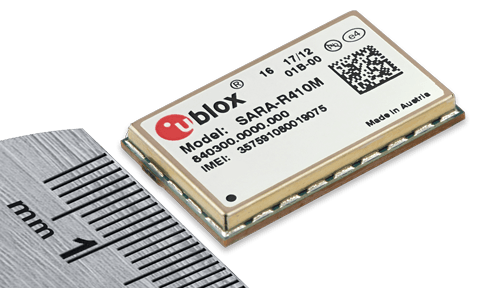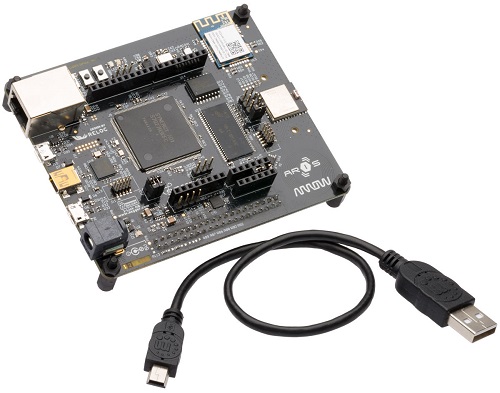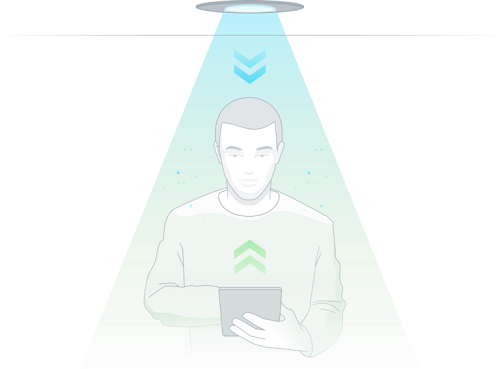By Richard Quinnell, Editor-in-Chief, Electronic Products
People have been talking about the Internet of Things (IoT) for several years now, but the idea of billions of connected devices communicating with one another as well as us is still more fantasy than fact. Still, there is no denying the IoT’s immense potential. In 2017, we saw the industry make major steps toward creating that reality, paving the way for 2018 to potentially be the year the IoT really takes off. Here are 10 of the key technologies that have advanced the IoT this past year.
LTE Category M1
Most current IoT implementations only use local area networks for their connectivity, but to reach its full potential, the IoT needs a suitable wide-area network (WAN) technology. With a WAN, IoT devices will no longer depend on user cellphones to operate beyond the confines of buildings and neighborhoods. The cellular technology LTE Category M1 is a prime contender for providing a WAN service that can provide nationwide and even worldwide connectivity to low-power IoT devices. Not only did 2017 see the introduction of chipsets and modems for LTE Cat M1, it saw the buildout of the corresponding cellular services themselves.

Radio chipsets and modems for LTE Category M1 cellular IoT have started to become commercially available. (Image source: uBlox)
Bluetooth mesh
While cellular technology was providing the IoT with a WAN alternative, local networks saw innovation as well. To offer a lower-power alternative to Wi-Fi for the IoT while providing similar coverage, Bluetooth evolved a mesh networking technology. Moving beyond its consumer roots, Bluetooth mesh is poised to further catalyze beacons, robotics, industrial automation, energy management, smart city applications, and other industrial IoT and advanced manufacturing solutions. The specification itself appeared mid-year, but chips and software to implement it were not far behind.
Multiprotocol wireless
The addition of Bluetooth mesh expanding the range of choices for building automation wireless connectivity merely complicated the designer’s dilemma in choosing which wireless technology to implement in their device design. But an alternative emerged: Choose several at once. Both hardware and software for multi-protocol wireless connectivity became readily available as a drop-in choice in 2017, expanding the market opportunity that IoT designs could address.
Security initiatives
The first generations of IoT devices that reached the field made one thing clear to even the most reluctant doubters: IoT devices need to ensure their own cybersecurity. The proponents of “security by obscurity” and those believing security too costly saw plenty of clear examples that those beliefs needed adjustment. While security is neither a new concept nor a new technology, what was new in 2017 was the amount of industry-wide energy going into addressing the issue. New alliances formed , hardware initiatives were launched, reference implementations and guidelines appeared, and semiconductor companies began routinely including security features in all of their IoT-targeted processors. Most recently, ARM implemented a security framework into its architecture so that future generations of ARM microcontroller devices would be sure to address the issue as well.
Fog computing
As IoT moves into industrial applications, concerns have emerged regarding its scalability. Industrial devices are expected to generate a lot of data per node, overloading wireless networks, and industrial control cannot tolerate significant latency in its operation. To address both concerns, the concept of fog computing has emerged. Rather than sending raw IoT data to the cloud for processing and response, the idea of fog computing is to keep the processing and control loops more local. When the IoT device itself cannot provide the processing needed, resources elsewhere on the local area network are brought to bear. They are not in the cloud, nor are they on the edge node; they are in the “fog” surrounding the IoT device. To stimulate development and adoption of this approach, a new industry group — the Open Fog Consortium — formed and released a reference architecture that will help guide development of interoperable systems.
IoT platforms
Anyone trying to develop an IoT product quickly realizes that they need to offer users more than just their product. IoT systems need a communications channel, cloud support, and, often, a web or smartphone app. The cloud support needs to not only accept data from the IoT device, process the data, and make the results available to the user; it needs to manage authentication and security as well as device provisioning. Doing all of this requires a breadth of expertise that few development teams can bring to bear. The solution to this problem in 2017 was the rise of IoT platforms .

An IoT platform starts with a development board, but there’s a lot of software behind the scenes. (Source: Arias)
IoT SoCs
In parallel with the rise of platforms, optimized system-on-chip (SoC) designs optimized for the IoT came to prominence during 2017. These devices typically include an application processor as well as full wireless connectivity integrated on-chip. These specialized devices allow developers to simply add sensors and user interface to create the hardware portion of their design and then focus the rest of their effort on the application software.
Li-Fi
As more and more devices get connected, the bandwidth of Wi-Fi networks gets more and more full. To supplement the network’s capacity, developers are turning to connected lighting to provide an alternative pathway . Smart lights are already becoming a popular IoT device, so why not expand on that connectivity by modulating the light to carry some network traffic? That’s what Li-Fi seeks to do. The technology has been in development for some time and has reached download speeds pushing 10 GHz . Now the first commercial devices are beginning to appear .

Because the lights are connected anyway, it’s only a small addition to turn them into an optical channel for LAN data. (Image source: PureLiFi)
Health-related sensors
Sensor technology continued to expand during 2017, with health-related sensors coming on strong. Some of them have been multi-function devices, like the MediaTek six-in-one biosensor , which monitors both heart activity and blood chemistry. There has also been development of ultra-low-power sensing capability. Many of these new sensors are working in the near-infrared range, unveiling information invisible to humans.
Voice activation
While not new to 2017, voice activation gathered substantial momentum as an IoT user interface during the year. One of the early market leaders, Amazon’s Alexa Voice Services (AVS), helped popularize voice-activation technology through the company’s Echo product line. This past year saw a flurry of activity around getting AVS and other voice services into the hands of developers for creating a whole host of products. MEMS microphone, audio processor, and MCU providers stepped forward with development kits and other offerings designed to simplify the incorporation of voice activation into IoT designs. Even the Raspberry Pi, popular with hobbyists and casual experimenters, got on the bandwagon with the release of an Alexa-compatible audio module. As a result, we can expect to see a lot of voice-activated IoT devices enter the market in 2018. Let’s just hope that things don’t get too noisy .
Advertisement
Learn more about Electronic Products Magazine





